CASE STUDY 2
Guiding Users Into Custom Offers
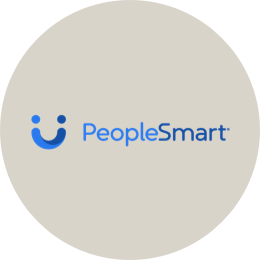
THE CHALLENGE / DISCOVERY
There are many types of digitized public records that people can access. Some examples include full names, age, addresses, phone numbers, court records, etc. We want to help narrow down vast amounts of search results to help find an exact match.
This challenge was discovered via marketing conversion metrics as well as split test data. The marketing team experiments with various campaigns based on holidays or events. This is where the best performing landing pages suggested a particular group of users are very interested in specific types of product offerings.
Although the discovery source is a bit unique, and starts from a quantitative measure, it was an interesting way to develop into qualitative hypothesis and develop new personas.
CUSTOMER JOURNEY
Example 1: I am in charge of inviting people to a class reunion. From old school records, I have the names and past addresses, phone numbers, and dates of birth for alumni. However, many years have passed, and much of that information is no longer valid.
- First, it is important to narrow down the type of information a user wants. In the example, it is contact information.
- The name and dates of birth may be shared by hundreds of other people, so other information such as location or family members can be referenced.
Example 2: Having just moved into the neighborhood, I want to see if there are any violent criminals living on my street. I typed in “background checks” into a search engine and selected PeopleSmart as the service.
- In this case, it is important to be able to select the type of record—criminal records.
PROCESS
DURATION: APPROXIMATELY 5 MONTHS
Instead of only a name and location field, we added categories of search types as part of the search widget. In the subsequent sections below the hero, there are further specifications based on use cases. These incude: personal use, professional use, and not for profit use.
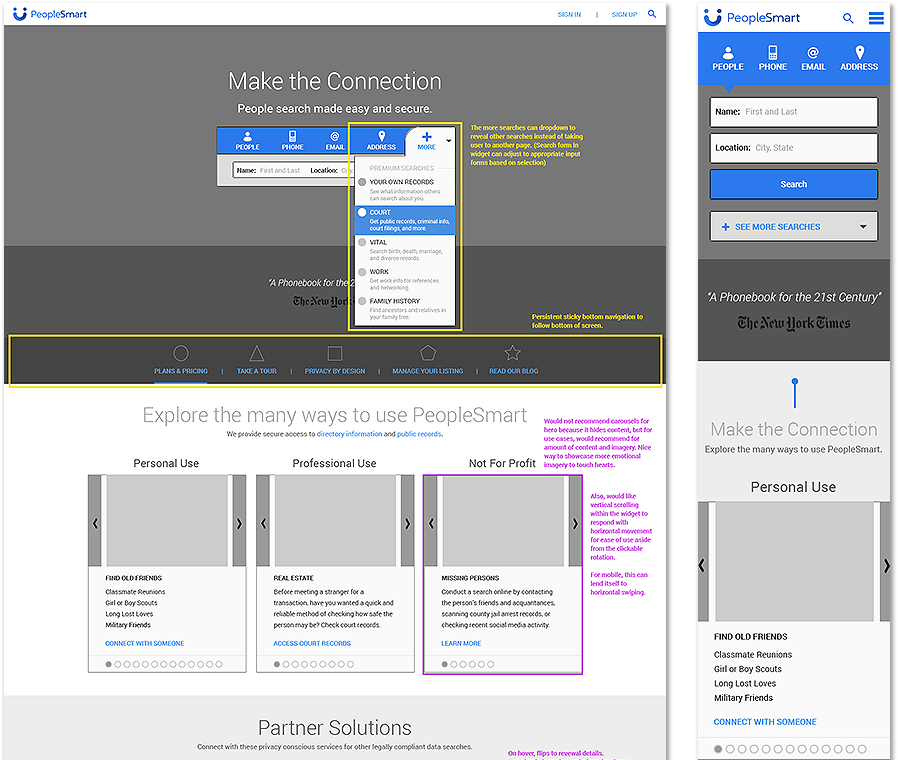
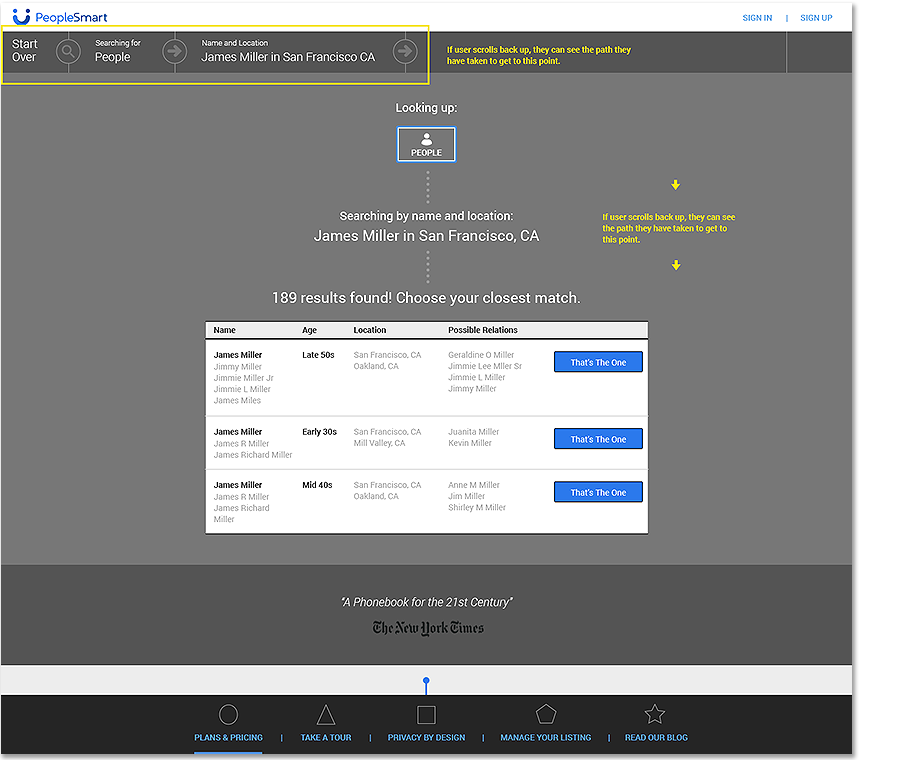
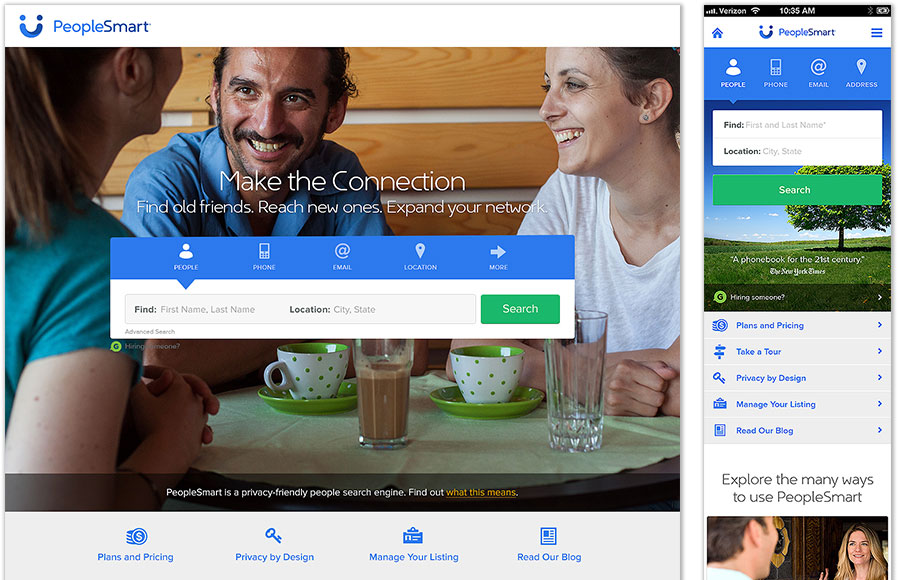
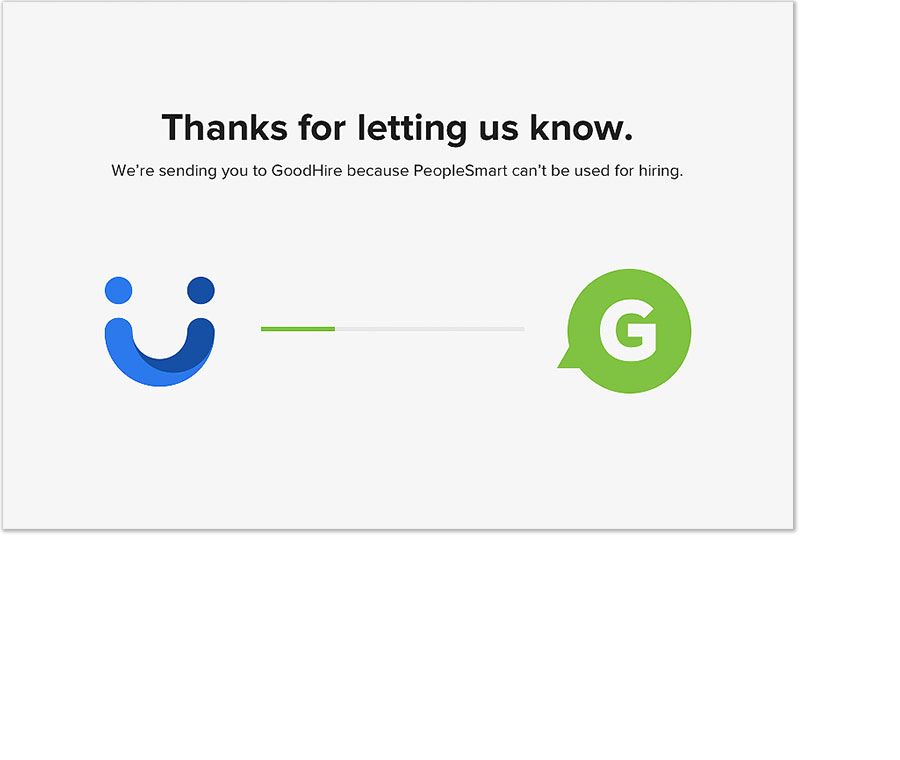
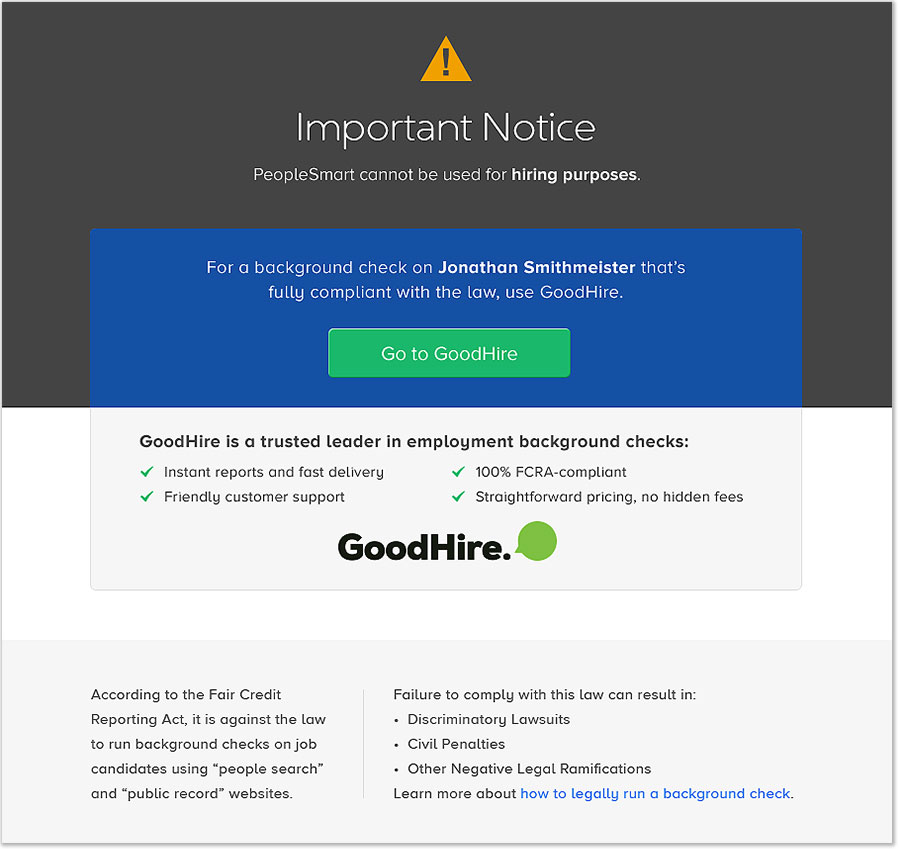
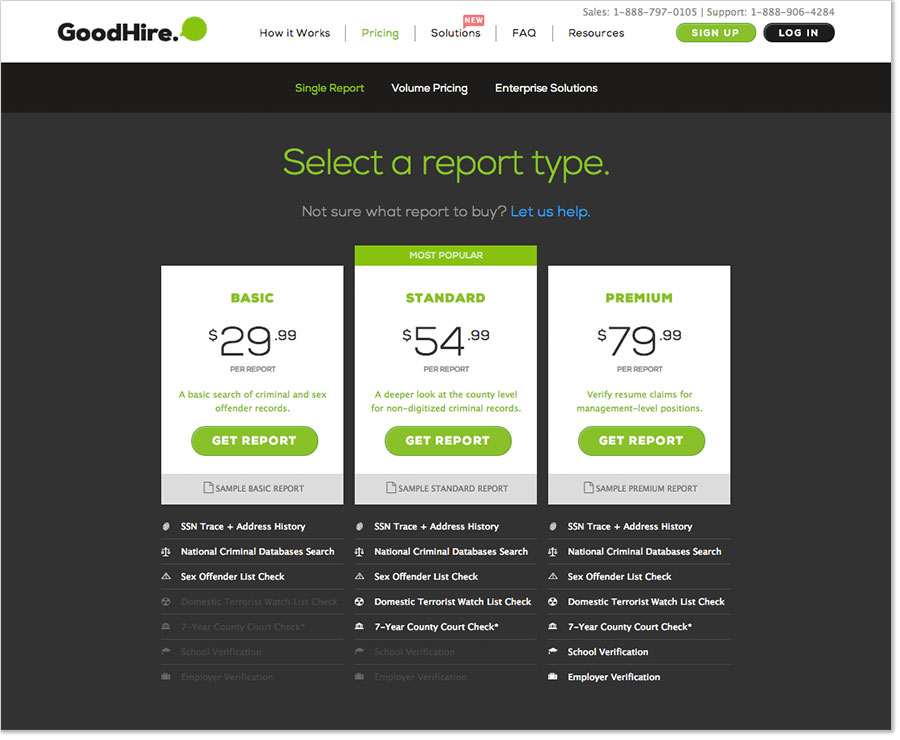
WHAT WE CHANGED
- After submitting the search parameters, the user is taken to a results page.
- Next, the new content, layout, and interactions are executed in high fidelity.
- After selecting a specific search type, users are guided to appropriate product offers. We tested both a simple transition to the specific product offer and a more robust version.
- Seeing the results of the A/B test, which were inconclusive, we opted for the robust version. During the transition, the robust version gave us an opportunity to educate customers about legal requirements and how the offer best matches the their needs.
- The customer can select the price and level of detail that they are looking for.
- The final page would be the actual results page or background report.
RESULTS
By identifying the types of records customers are looking for earlier in the process, then guiding them through the rest of the flow, the results sets seemed to be more accurate. This was concluded by the uptick in conversion rates based on an A/B test that lasted about 3 months after implementation.

MY LOCATION
Silicon Valley, California USA